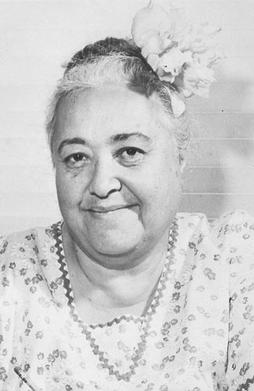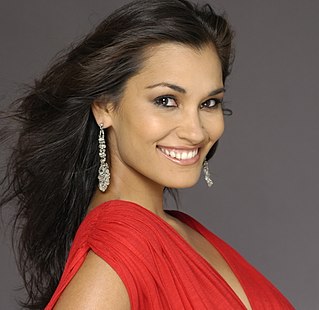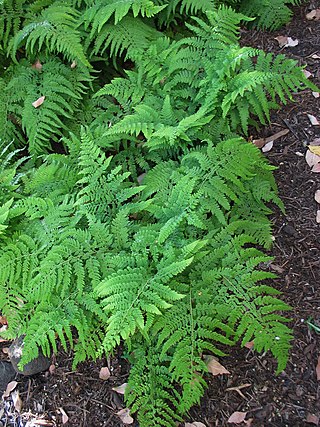Related Research Articles
David Wong Louie was a Chinese-American novelist and short story writer.

Mary Abigail Kawenaʻulaokalaniahiʻiakaikapoliopele Naleilehuaapele Wiggin Pukui, known as Kawena, was a Hawaiian scholar, author, composer, hula expert, and educator.

Brook Antoinette Mahealani Lee is an American TV host, model and beauty queen who was crowned Miss Hawaii USA 1997, Miss USA 1997 and Miss Universe 1997. Lee is the first native Hawaiian to win the title of Miss Universe.
Frank Stewart is an American poet and translator.
Wing Tek Lum is an American poet. Together with a brother he also manages a family-owned real estate company, Lum Yip Kee, Ltd.
Margaret Maiki Souza Aiu Lake was a hula dancer, kumu hula, hula teacher, and influential figure in the second Hawaiian Renaissance because of her revolutionary teaching techniques. Because of her work she was recognized as the "Mother of Hawaiian Renaissance." Many of her students became teachers themselves making her the "most important hula teacher of the 20th century."

Adrienne Lois Kaeppler was an American anthropologist, curator of oceanic ethnology at the National Museum of Natural History at the Smithsonian Institution in Washington, DC. She served as the President of the International Council on Traditional Music between 2005 and 2013. Her research focused on the interrelationships between social structure and the arts, including dance, music, and the visual arts, especially in Tonga and Hawaii. She was considered to be an expert on Tongan dance, and the voyages of the 18th-century explorer James Cook.
Mele are chants, songs, or poems. The term comes from the Hawaiian language. It is frequently used in song titles such as "He Mele Lāhui Hawaiʻi", composed in 1866 by Liliʻuokalani as a national anthem. Hawaiian songbooks often carry the word in the book's title. Mele is a cognate of Fijian language meke.

Winona Kapuailohiamanonokalani Desha Beamer was a champion of authentic and ancient Hawaiian culture, publishing many books, musical scores, as well as audio and video recordings on the subject. In her home state, she was known as Auntie Nona. She was an early proponent of the ancient form of the hula being perpetuated through teaching and public performances. Beamer was the granddaughter of Helen Desha Beamer. A cousin to Hawaiian Music Hall of Fame inductee Mahi Beamer, she teamed with him and her cousin Keola to form a touring North American troupe performing ancient hula and the Hawaiian art of storytelling. She was a teacher at Kamehameha Schools for almost 40 years, but had been expelled from that same school as a student in 1937 for dancing the standing hula. Beamer's sons Keola and Kapono are established performers in the Hawaiian music scene. Her grandson Kamanamaikalani Beamer is a professor at the University of Hawaii at Manoa and CEO of the Kohala Center. She ran a Waikiki hula studio for three decades. In 1997—indignant at proposals to cut Hawaiian curriculum from Kamehameha Schools—Beamer became the catalyst for public protest and legal investigation into Bishop Estate management, which eventually led to the removal or resignation of the trustees.
Joyce Sachiko Tsunoda is an American college administrator who served as the Chancellor for the University of Hawaii community colleges for 20 years. She was the "first Asian American woman to serve as the chancellor of a multi-campus community college system".

Microlepia strigosa, known as hay-scented fern, lace fern, rigid lace fern and palapalai, is a fern indigenous to the Hawaiian islands and is also native to other parts of the tropics and subtropics including India and Malaysia. This fern belongs to a group of about seventy Microlepia species in the bracken or hay-scented fern family (Dennstaedtiaceae). There are two indigenous species and a hybrid found in the main Hawaiian Islands. It is also known by the botanical names: Davallia hirta, Davallia setosa, Davallia strigosa, Dicksonia kaulfussiana, Dicksonia strigosa, Microlepia hirta, Microlepia setosa, Stenoloma tenuifolium, Trichomanes strigosum. It has coarse, light to medium green fronds which can grow to more than 3 ft (0.9 m) long.

Kini Kapahu Wilson was a Hawaiian hula dancer, musician, and singer. In 1893–94, she toured the United States, Europe and Russia, performing for heads of state such as Kaiser Wilhelm II and Tsar Nicholas II. She married Honolulu Mayor John H. Wilson and was recognized as the "Honorary First Lady" of Hawaii.

"Auntie" Alice Kuʻuleialohapoʻinaʻole Kanakaoluna Nāmakelua (1892–1987) was a Hawaiian composer and performer. Nāmakelua was also a kumu hula dancer and lei-maker. She was an expert performer of the slack-key guitar and a master of the Hawaiian language. Nāmakelua was a mentor of other musicians and wrote around 180 songs of her own. She was inducted into the Hawaiian Music Hall of Fame in 2011.

Charles Edward King was an educator, Hawaii territorial legislator, and a songwriter who is most widely known as the composer of "Ke Kali Nei Au". King was inducted into the Hawaiian Music Hall of Fame in 1995. Music historian George Kanahele regarded King as the "Dean of Hawaiian Music", although this sobriquet is more associated with John Kameaaloha Almeida.
Solomon Kamaluhiakekipikealiʻikaʻapunikukealaokamahanahana Bright Sr. was an entertainer of Hawaiian and Castilian ancestry, who played steel guitar and is most widely known as the composer of Hawaiian Cowboy. He was born one of fourteen children to Hawaiian minister Andrew Laukea Bright and church organist Alike Kekipau Bright in Honolulu.

Bina Kailipaina Nieper Mossman was an American ukulele player, vocalist, composer, and Republican Party office holder. She also served as High Sheriff of Honolulu. She was tutored in music, and pronunciation of Hawaiian words, by deposed Queen Liliuokalani.

Kong Tai Heong was a trained obstetrician who was the first Chinese woman to practice medicine in Hawaii. Also certified as a midwife, she delivered babies for the Hawaiian, Portuguese and Chinese populations in Honolulu, practicing for over fifty years. In 1946, she was credited by Robert Ripley as having delivered more babies than any other private practitioner in the United States.
Na Lani ʻEhā, translated as The Four Royals or The Heavenly Four, refers to the siblings King Kalākaua (1836–1891), Queen Liliʻuokalani (1838–1917), Princess Likelike (1851–1887) and Prince William Pitt Leleiohoku II (1854–1877). All four were composers, known for their patronage and enrichment of Hawaii's musical culture and history. All four of them organized glee clubs. William Pitt Leleiohoku II, the youngest brother who died at age 22, was a guitar master and leader of the Kawaihau Glee Club. Youngest sister Likelike was a musician and a co-founder of the Kaohuokalani Singing Club.
Lisa Linn Kanae is an English professor at Kapiʻolani Community College and is best known for her poetry and short stories written in Hawaiian Pidgin.

Edith Kenao Kanakaʻole was a Hawaiian dancer, chanter, teacher, and kumu hula. Born in Honomū, Hawaiʻi in 1913, she was taught hula from a young age, and dropped out of her formal schooling before completing middle school. She began to compose traditional Hawaiian music in 1946, choreographing hula to accompany many of her chants, and founded Hālau O Kekuhi in 1953. In the 1970s, she taught Hawaiian studies and language at Hawaiʻi Community College and later the University of Hawaiʻi at Hilo, where she worked until her death in 1979.
References
- ↑ Guiyou Huang, ed. (2002). "CAROLYN LAU (1946–): Rowena Tomaneng Matsunari". Asian-American Poets: A Bio-Bibliographical Critical Sourcebook. Westport, CT: Greenwood Press. p. 189. Archived from the original on Oct 18, 2012 – via Questia.
- ↑ Howard Junker, ed. (2005). AutoBioDiversity: true stories from ZYZZYVA. Heyday Books. ISBN 978-1-59714-007-2.
- ↑ "Carolyn Lei-lanilau". 28 May 1981.
- ↑ "Carolyn Lei-Lanilau".
- ↑ "Firecracker Alternative Book Awards". ReadersRead.com. Archived from the original on Mar 4, 2009.